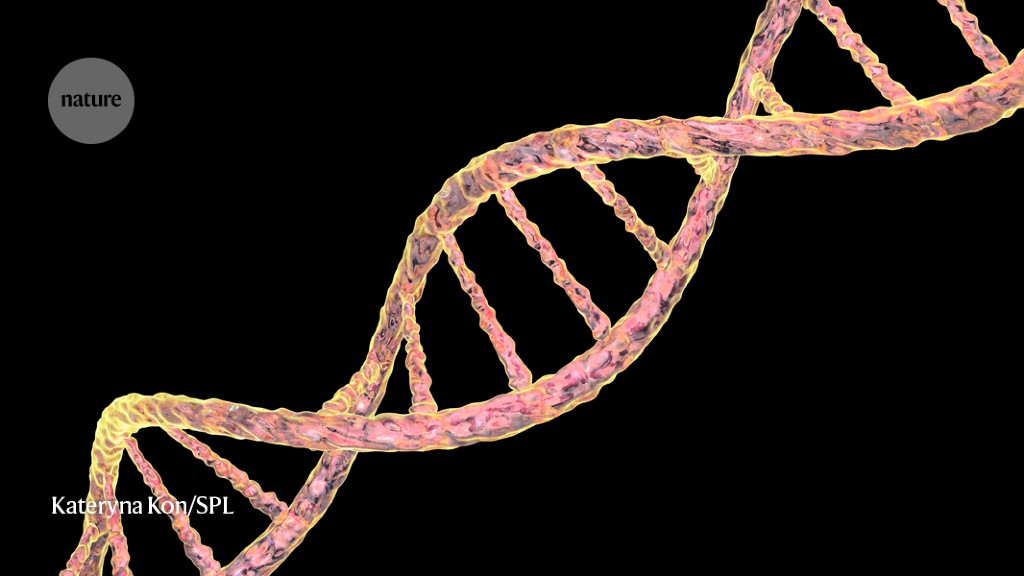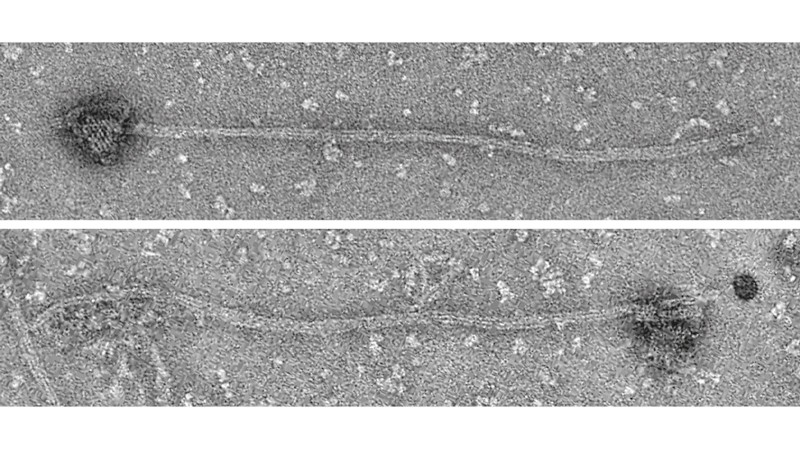Physicists have built a molecular-scale motor entirely from DNA strands, and used it to store energy by winding up a DNA ‘spring’.
It is not the first DNA nanomotor, but it’s “certainly the first one to actually perform measurable mechanical work”, says Hendrik Dietz, a biophysicist at the Technical University of Munich in Germany whose team reported the results on 20 July in Nature1. The technique adds to a growing list of ‘DNA origami’ tricks that are being used to build structures on the molecular scale. The approach aims to find applications in fields such as chemical synthesis and drug delivery.
Living cells are stuffed with molecular machines, including rotary motors; these carry out a range of tasks, from wiggling a bacterium’s flagellum to producing ATP molecules that make up a cell’s energy stocks. These motors often use ratchet mechanisms, similar to the toothed wheels in clockwork that allow rotations in one direction but not the other.
Like everything else in the cell, biological machines are continually buffeted around as a result of Brownian motion — the constant, random movement of molecules and other particles in the cytoplasm. Often when particles bump together, they can impart a ‘kick’ of energy to one another.
Dietz and his colleagues wanted to engineer a motor out of DNA that could be driven by Brownian motion in a similar way to the protein-based machines found in cells. In the DNA origami technique they used, loops of single-stranded DNA from a bacteriophage virus are mixed together in a solution with short strands of synthetic DNA; these are made to match the nucleobase sequences of specific sites in the viral genome. The short pieces bind to the long strands and force them to fold into the desired shape. Since this technique was first demonstrated in 20062, researchers have built DNA origamis of increasing complexity.
Kicks and bumps
Dietz and his team built triangular platforms out of DNA, each of which had a rod sticking out from the middle. They stuck these structures to a glass surface and added long DNA arms, which attached to the platforms in a way that allowed them to rotate around the rod.
To create a ratchet effect, the researchers patterned the platforms with bumps that made that rotation more difficult. Only kicks provided by Brownian motion enabled the arms to overcome the bumps and rotate, typically by a half-turn.
Without any further intervention, the rotation would go back and forth randomly. So the team also dipped two electrodes into the solution and ran an electrical current in alternating directions. The changing voltage altered the energy landscape experienced by the long DNA arms, and made rotation in one direction more favourable, through a mechanism known as a flashing Brownian ratchet.
This turned the passive devices into actual motors. Microscope images demonstrated that under these conditions, each arm — although shaking randomly — kept rotating in the same direction on average. (The direction depended on the precise orientation of the triangular base with respect to the electrodes.)
Like a wind-up watch
By itself, the nanoscale motor does nothing more than overcome the drag of the surrounding solution. “It’s like when you’re swimming: you’re moving forward and you do a lot of work, and it’s dissipated in water,” Dietz says. But to show that it could also do potentially useful work, the researchers took a further step: they attached another string of DNA to their rotor and made it wind around like the spiral spring used to turn the gears in a mechanical watch. Such a mechanism could help nanomachines to store energy or pull on other mechanical components, Dietz says.
“It’s a remarkable achievement of the team, first of all for them to be able to design a system that folds into such a complex and functional structure with DNA origami and, second, for them to be able to characterize its dynamics so thoroughly,” says David Leigh, a chemist at the University of Manchester, UK. Using a very different approach, Leigh and his team this year demonstrated a rotary motor at the atomic scale, which swivelled around a single molecular bond3.








More News
Star Formation Shut Down by Multiphase Gas Outflow in a Galaxy at a Redshift of 2.45 – Nature
Garden-variety fungus is an expert at environmental clean-ups
Air-travel climate-change emissions detailed for nearly 200 nations